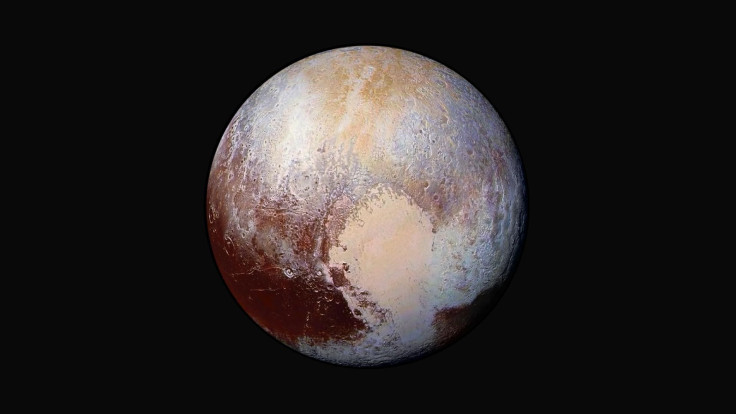Pluto Update: Planet's 'Beating Heart' Controls Winds, Creates Surface Features

KEY POINTS
- Pluto's 'heart' was observed thanks to the New Horizons mission
- The heart is actually an ocean of frozen nitrogen
- Researchers found that the heart "beats" in a cycle that controls atmospheric circulation
- This heartbeat could be responsible for some of the features on Pluto's surface
Before the New Horizons mission did a flyby of Pluto in 2015, many thought that Pluto had a plain and flat surface. However, all that changed when the flyby revealed what is now an iconic feature of the dwarf planet-the heart-shaped structure now named after Tombaugh Regio, the man who discovered Pluto in 1930.
In a new study, researchers revealed that Tombaugh Regio isn’t just a unique feature on the surface of the planet but it is, in fact, what controls the flow of nitrogen wind around the planet. Without this "heartbeat," Pluto might look completely different.
Pluto’s ‘Heartbeat’
To see whether certain features on Pluto can be explained by the circulation of air, an international team of scientists led by Tanguy Bertrand of NASA’s Ames Research Center created a detailed climate model of Pluto’s thin atmosphere, which is comprised mostly of nitrogen as well as a little carbon monoxide and methane.
The left “lobe” of Tombaugh Regio called Sputnik Planitia is also made up of an ocean of frozen nitrogen.
Based on the high-resolution models they created, they found that a thin layer of the frozen nitrogen from Sputnik Planitia warms during the day and turns into a vapor that goes around the planet. When night falls, the vapor condenses and turns into ice again.
This daily cycle is much like a “heartbeat” that comes from the region, driving Pluto's winds at about 10 meters per second around the planet.
Retro-Rotation
In addition to discovering this heartbeat, the researchers also found that the cycle actually blows opposite of the direction of the planet’s rotation. And as the air moves close to the surface, it also transports haze particles, grains of ice, and heat, thereby creating dark wind streaks.
According to the researchers, this could explain many of the geological features and asymmetries in ice distribution all over the surface of Pluto. If the wind moved in a different direction, the landscapes might look completely different from the way they do now.
“This highlights the fact that Pluto's atmosphere and winds – even if the density of the atmosphere is very low – can impact the surface,” Bertrand said. “Sputnik Planitia may be as important for Pluto's climate as the ocean is for Earth's climate. If you remove Sputnik Planitia – if you remove the heart of Pluto – you won't have the same circulation.”
The study is published in AGU's Journal of Geophysical Research: Planets.
© Copyright IBTimes 2024. All rights reserved.






















